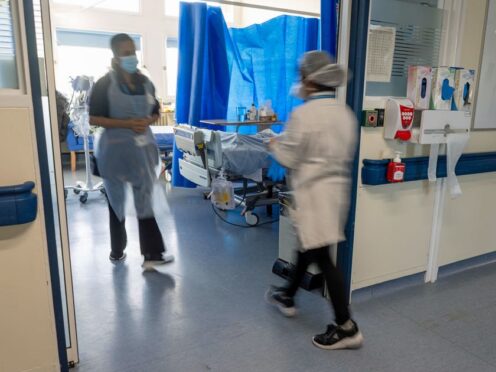Long waits in A&E in Scotland are “practically the norm”, the Scottish Lib Dems have said after figures showed the number of people waiting more than 12 hours in January was the highest on record.
According to figures released by Public Health Scotland, 8,857 people waited more than half a day in A&E – accounting for 7.2% of all attendances – up from 6,644 in December.
The figure’s previous highest level was in December 2022, when it was 8,821.
Scottish Lib Dem leader Alex Cole-Hamilton said: “Thousands of people waiting over 12 hours at A&E month after month should be something staff and patients never have to suffer through but, under this SNP Government, it’s practically the norm.
“The new Health Secretary needs to act now to pull our NHS out of crisis. Staff and patients cannot afford yet another year of stagnation and no recovery.”
In January, a total of 43,240 people waited more than the Scottish Government’s four-hour target time in the same month, the second highest on record and up from 42.599 in December.
The only time the figure has been higher was in December of 2022, when 49,283 people waited more than four hours.
In the most recent month, 65.5% of people waited more than the target time, down slightly from 65.9% the previous week.
The number of people waiting more than eight hours also increased sharply, rising from 15,297 to 17,893 – equating to 14.6% of all attendances.
The most recent weekly figures showed some slight positivity, with the proportion of patients seen and subsequently admitted, transferred or discharged within four hours rising to 64.1% in the week up to February 25 from 62.8% the previous week.
Scottish Tory health spokesman Dr Sandesh Gulhane said the waiting times were an “unacceptable norm”.
“We know these excess waits lead to tragic, needless loss of life,” he said.
“They are the direct result of the dire workforce planning of successive SNP health secretaries, as well as Humza Yousaf’s flimsy recovery plan.
“Despite the best efforts of my frontline colleagues, Scotland’s emergency wards simply can’t cope with the demands placed on them.
“Neil Gray must step up and tackle this crisis head-on, by adopting the measures contained in the Scottish Conservatives’ new health paper, which set out our vision for a modern, efficient, and local NHS.”
Scottish Labour deputy leader Dame Jackie Baillie said Health Secretary Neil Gray “has been put in charge of an NHS fighting for its life”.
“This chaos is not just the handiwork of Michael Matheson or Humza Yousaf before him – it is the culmination of 17 years of SNP incompetence,” she said.
“Patients are being left stranded for hours on end because overstretched A&Es simply cannot cope.”
She added: “Neil Gray has a huge challenge ahead to tackle this crisis and bring our NHS back from the brink, but it is essential that he does so.”
A spokesperson for the Scottish Government said: “We know that long delays remain too high and we continue to work with boards to reduce these instances, which are not unique to Scotland.
“A&E performance is impacted by pressures from across the wider health and social care system which is why our unscheduled care collaborative programme is taking a whole system approach as we work with health boards to deliver sustained improvement.
“Hospital bed occupancy continues to be a major factor impacting on performance.
“To address this, the delayed discharge and hospital occupancy action plan is being implemented at pace, delivering actions we know work to ensure patients receive the right care in the right setting.”
